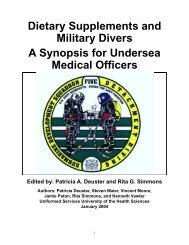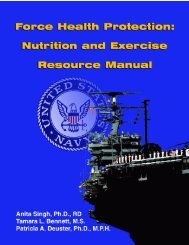<strong>Traumatic</strong> <strong>Brain</strong> <strong>Injury</strong> (TBI) <strong>and</strong> <strong>Effects</strong> <strong>of</strong> <strong>Altitude</strong>:An Analysis <strong>of</strong> the Literaturereported in the retrospective study by Donovan et al. (2008) had intracranial air volumes above 14 ml atthe time <strong>of</strong> air transport. Using a computer model to simulate the pressure effects <strong>of</strong> exp<strong>and</strong>ingintracranial air, Andersson et al. (2003) consider worst case results <strong>of</strong> intracranial air volume increaseduring aeromedical transport. Based on their theoretical modeling, the authors conclude thatintracranial air volume will increase by 30% at a maximum cabin altitude <strong>of</strong> 8000 feet <strong>and</strong> that resultingICP depends on initial air volume <strong>and</strong> the rate <strong>of</strong> cabin pressure change. They considered that for anintracranial air volume <strong>of</strong> 30 ml, ICP could increase by approximately 11 mmHg, which is potentially highenough to impair a patient’s clinical condition.HYPOXIAAlthough the concentration <strong>of</strong> oxygen in the air remains constant up to the limits <strong>of</strong> the troposphere,atmospheric pressure decreases exponentially with altitude. This causes a reduction in the partialpressure <strong>of</strong> oxygen, which in turn causes tissue hypoxia. Normal brain tissue oxygen pressure (P0 2 ) isbetween 20 <strong>and</strong> 40 mmHg. When brain tissue P0 2 falls to 15 mmHg or below, it is considered hypoxic(Kiening, 1996).When brain cells are deprived <strong>of</strong> oxygen, this initiates a cascade <strong>of</strong> damaging biochemical <strong>and</strong>physiologic events. A dramatic increase in excitatory neurotransmitters (e.g., glutamate, aspartate)causes a massive, unregulated influx <strong>of</strong> calcium which in turn triggers the release <strong>of</strong> enzymes. Affectedneurons begin to catabolize themselves to maintain energy <strong>and</strong> activity. An accumulation <strong>of</strong> catabolicwaste products such as lactic acid causes irreversible damage to neurons, eventually resulting in celldeath. This contributes to secondary brain injury, <strong>and</strong> to the worsening <strong>of</strong> outcome in patients withmoderate <strong>and</strong> severe TBI (Chestnut et al., 1993; Miller et al., 1978; Schreiber, et al., 2002; Stocchetti etal., 1996).To prevent secondary damage by hypoxia, TBI patients (GCS < 14) at high altitude should be treated withsupplemental oxygen 7 . Grissom (2006) recommends oxygen treatment <strong>of</strong> combat casualties at highaltitude under the following circumstances:SpO 2 < 90% at altitudes up to 10, 000 feet; SpO 2 < 85% at 12, 000 feet; <strong>and</strong> SpO 2 < 80% at 14,000 feetInjuries associated with impaired oxygenation including blunt or penetrating chest trauma, orneck or facial trauma associated with airway obstructionUnconscious patient<strong>Traumatic</strong> brain injury with a Glasgow Coma Scale score < 13Hemorrhagic shock as identified by systolic blood pressure less than 90 mmHg or heart rategreater than systolic blood pressureOxygen treatment should be titrated to achieve an SpO 2 > 90% or applied empirically by highflowface mask when SpO 2 is not available or obtainable because <strong>of</strong> decreased peripheralperfusion7 Oxygen treatment also provides the additional benefit <strong>of</strong> reducing ICP <strong>and</strong> increasing CPP.September 14, 2010 16
<strong>Traumatic</strong> <strong>Brain</strong> <strong>Injury</strong> (TBI) <strong>and</strong> <strong>Effects</strong> <strong>of</strong> <strong>Altitude</strong>:An Analysis <strong>of</strong> the LiteratureAll <strong>of</strong> the hypoxia studies identified <strong>and</strong> included for this review involved patients with moderate <strong>and</strong>/orsevere TBI. None included patients with mild TBI, <strong>and</strong> none found reported differential effects <strong>of</strong>hypoxia based on level <strong>of</strong> TBI severity.Our search captured six recent studies <strong>of</strong> hypoxia as a risk factor in TBI outcome (Appendix: Table 4). Ofthese, four retrospective studies <strong>and</strong> one prospective study found a strong association between hypoxia<strong>and</strong> TBI outcome. Three identified a significant relationship between hypoxic episodes <strong>and</strong> patientmorbidity, disability <strong>and</strong>/or mortality (Chi et al., 2006; Davis et al., 2009; Jiang et al., 2002), while tworeported an association between hypoxia <strong>and</strong> functional outcome. Ariza et al. (2004) observed arelationship between pre-hospital hypoxia <strong>and</strong> prefrontal outcome, evinced by impaired attention,reaction time, mental flexibility, fluency <strong>and</strong> verbal memory. Chang et al. (2009) found that thefrequency <strong>and</strong> duration <strong>of</strong> brain tissue hypoxia in the intensive care setting was related to subsequentpoor functional outcome as assessed in various domains such as personal care, home management,social integration, work/school activity, ambulation <strong>and</strong> executive functioning.While Manley’s (2001) prospective study found no relationship between hypoxia <strong>and</strong> TBI outcome, theauthors identified several limitations <strong>of</strong> this study to include data recording artifact from the datacollection environment.Of particular relevance to this review is the observation that both hypoxemia <strong>and</strong> hyperoxemia(increased arterial blood oxygen saturation) are potentially dangerous to patients with TBI (Davis et al.,2009). This is consistent with contemporary practice that cautions against aggressive hyperventilationduring acute phases <strong>of</strong> severe TBI <strong>and</strong> pre-hospital care (Bullock & Povlishock, 2007). Hyperventilationcan cause hypocapnia -- a reduction in the arterial pressure <strong>of</strong> carbon dioxide (PaCO 2 ) – which leads tovasoconstriction in the brain. This restricts circulation <strong>and</strong> oxygenation, which in turn exacerbatesischemia <strong>and</strong> hypoxia. Hyperventilation can be effective to reduce ICP in some patients (Letarte, 1999).However, its use is recommended only in patients with clear signs <strong>and</strong> symptoms <strong>of</strong> brain herniation <strong>and</strong>oxygen delivery should be monitored. Prophylactic hyperventilation (PaCO2 <strong>of</strong> 25 mm HG or less) is notrecommended for severe TBI patients, <strong>and</strong> should be avoided during the first 24 hours post-injury whenCBF may be critically reduced (Bullock & Povlishock, 2007).Papadimos (2008) proposes that inhaled nitrous oxide (INO) may be an effective intervention to supportoxygenation while reducing the risk <strong>of</strong> inflammation <strong>and</strong> intracranial pressure, especially in patients whohave TBI in combination with acute respiratory distress. Rodent studies show results from this techniquewith potential translational value, as have at least two clinical case reports (Papadimos et al., 2009;Vavilala et al., 2001).INTRA-CRANIAL PRESSURE/BLOOD PRESSUREAlterations in blood pressure <strong>and</strong> oxygenation that could normally be tolerated well by the uninjuredbrain are potentially damaging to the injured brain. Secondary ischemic damage is more common inpatients who have sustained hypoxia, hypotension, or elevated ICP. It is also more common <strong>and</strong> severein more severe TBI <strong>and</strong> is found in the majority <strong>of</strong> patients who die <strong>of</strong> head injury (Chan et al., 1992;Graham et al., 1989; Marion et al., 1991).September 14, 2010 17



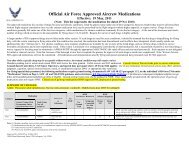

![Body Composition and Military [PDF] - Human Performance ...](https://img.yumpu.com/43269347/1/190x245/body-composition-and-military-pdf-human-performance-.jpg?quality=85)
![Tips for Grocery Shopping [PDF]](https://img.yumpu.com/37447379/1/190x245/tips-for-grocery-shopping-pdf.jpg?quality=85)
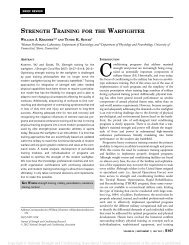
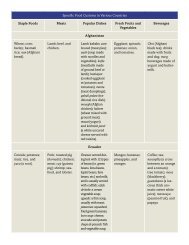
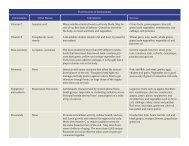
![Synthetic Drugs [PDF] - Human Performance Resource Center](https://img.yumpu.com/37447322/1/190x245/synthetic-drugs-pdf-human-performance-resource-center.jpg?quality=85)
